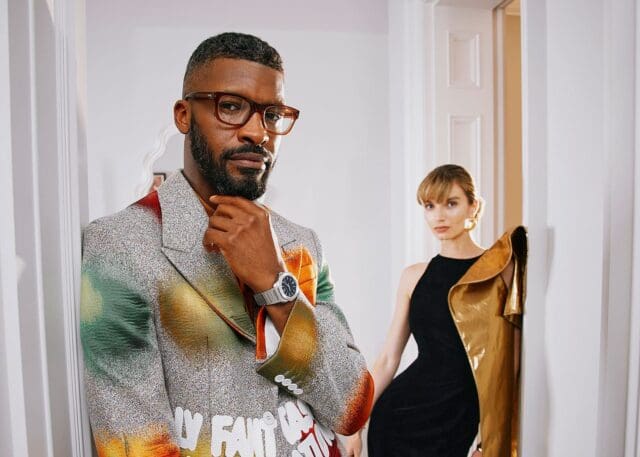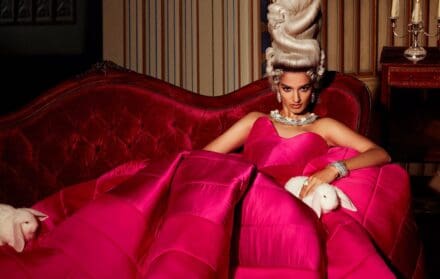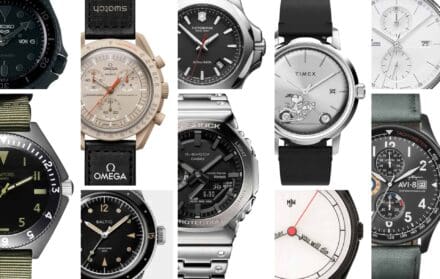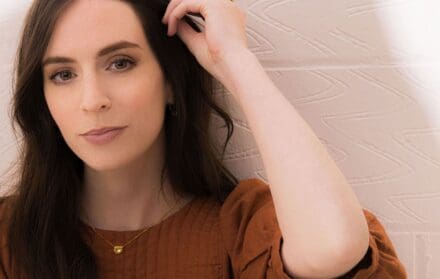Why do we love ugly fashion?
Bin bags, towel skirts, croissant bags and an endless cycle of garish, awkward and oversized styles – weird is in right now, but what is the appeal of the unaesthetic?
Have you ever seen a fashion brand’s new collection or show and thought, ‘What the hell?’ If so, you wouldn’t be alone. Every now and again, a label (we’re looking at you, Balenciaga) produces something so heinous – so antithetical to all that is good and elegant about fashion – that it leaves audiences scratching their heads. Which, of course, may well be the point. So why do brands keep churning out unattractive styles, and why do consumers keep buying them?
Ugly fashion, in its current iteration, is the bombastic child of ‘normcore’, which was a counterweight to the high-octane, high-effort, high-cost fashion touted by the likes of the Kardashians. Dad trainers, Birkenstocks and other pieces once considered sartorial suicide were suddenly hot – and nowhere was this change in fortunes so marked as in the case of Crocs. The footwear’s ironic rise to power soon became a genuine trend worn by the likes of Ariana Grande and Justin Bieber.
This was the moment, perhaps, that ‘normcore’ transmogrified into something more freakish. Leading the charge was Gen Z, who can now be found wearing oversized jorts, garish sportswear, wraparound sunglasses, and the capri pants Millennials loved when we were eight. They’ve replaced ‘Instagram face’ (the homogeneous, impossibly perfect social media ‘look’ coined by the New Yorker) with the grittier ‘soft grunge’ and ‘indie sleaze’ aesthetics.
Last year, Bella Hadid was pictured cosplaying as the protagonist in a Noughties chick flick before the makeover that reveals they’re actually conventionally attractive – i.e. in a pair of librarian glasses and tartan knee-length skirt. Model and all-round ‘it’ girl Iris Law, meanwhile, posted a picture of herself donning a grandma cardigan with two straggly hair strands dangling from her head. Trending ‘how to dress like you’re from the Lower East Side’ videos on TikTok show girls attiring themselves like they’ve raided the children’s section of a charity shop and then gotten dressed in the dark.
The slightly alien (and not, most people would agree, particularly flattering) bleached eyebrow trend was worn by everyone from Kim Kardashian to Julia Fox, who declared that ‘ugly is in’ and claimed that she had done it to repel men. Doja Cat, meanwhile, turned up to Schiaparelli’s Haute Couture SS23 show dressed like a Swarovski-encrusted demon. Elsewhere, the popularity of artists such as Fecal Matter (or @matieresfecales, as the duo is known on Instagram), Michaela Stark, and Salvia, and drag queens like Hungry and Charity Kase, speaks to a growing fascination with the grotesque. In 2018, Fecal Matter produced a pair of heels that resembled human skin, priced at $10,000.
This trend isn’t just a street style phenomenon, however – it is coming from the top. Distorted silhouettes and mismatched maximalism are increasingly common at Fashion Week. In 2018, Christopher Kane opened the floodgates with his Crocs collaboration; fast-forward to SS23 and you have Barragán sending models wearing facial prosthetics down the runway, having emerged from portaloos. Last Paris Fashion Week, Miu Miu showcased a collection of awkward blazer-and-swimwear combos, geeky glasses, and flats paired with neon blister plasters. Outrageous items like Moncler’s ‘sleeping bag dress’, Jil Sander’s brown paper bag, and Moschino’s croissant bag have only fed consumers' taste for the absurd.
But no champion of the movement does so with the same unwavering commitment as Balenciaga. Demna’s appointment as the brand’s creative director initiated a slew of launches that went viral for their ugliness, from ‘pantashoes’ – combined trousers and boots that are, if not exactly ‘ugly’, then incredibly inconvenient – to what appeared to be a blue Ikea tote and numerous bin bag-inspired pieces. Oh, and who could forget the $1,800 handbag that looked like a bag of crisps, the $1,850 trainers that are more accurately described as ‘destroyed’ than ‘distressed’, and the skirt that is, in fact, a grey towel wrapped around the waist of the wearer?
A penchant for the unsightly in aesthetics, however, is nothing new. The term ‘the cult of ugliness’ was coined by Ezra Pound to describe modernism’s rejection of beauty as a response to the anxiety of the time. Similarly, Edvard Munch and Pablo Picasso ushered in a new genre of art whose primary purpose, for the first time, was not beauty – their twisted paintings manifested the artists’ dark view of the world. Philosophers have long contemplated the ‘paradox of ugliness’ – the phenomenon of unattractive things being perceived as attractive.
Ugly fashion has also been around for a while: Savage Beauty, a 2011 Metropolitan Museum of Art exhibition, displayed items such as Alexander McQueen’s ‘armadillo boot’ – a beast of a shoe that resembled a scaley hoof or trotter more than it did footwear. Prada was another pioneer of anti-fashion fashion, and has been playing with jolie laide ever since Miuccia Prada’s seminal Bad Taste collection in 1996. In 2012, she said: “Ugly is attractive, ugly is exciting. Maybe because it is newer.”
This observation, of course, is true: in an industry that is all about reinvention, ugliness is the final frontier. Or, if we’re going to be more cynical about it, ugly items are gimmicks, produced as a talking point or PR opportunity.
This may be true at the top end of fashion – it’s difficult to imagine that Balenciaga’s antics, or that massive red MSCHF boot that broke the internet last February, are anything but social media fodder. But in the grassroots, among Gen Z, it genuinely feels like counterculture – a reaction to constantly being sold perfection. No longer is today’s youth willing to contort themselves into super-expensive bodycon dresses or six-inch heels in the name of ‘beauty’.
The social media trends that accompanied the swing towards garish garments would support this theory: ‘goblin mode’, which refers to being slovenly or self-indulgent in a way that rejects social norms, was the Oxford Dictionary’s Word of the Year in 2022. This was also the year of ‘feral girl summer’, which, again, calls for the rejection of polite conventions. It all spoke to a loosening of standards in an era that demands perfection, thanks in large part to the idealised image of ourselves and our lives that we put out on social media. In a world of filters, over-sexualised fashion, and ‘grind’ or ‘hustle’ culture, ugliness is rebellion.






